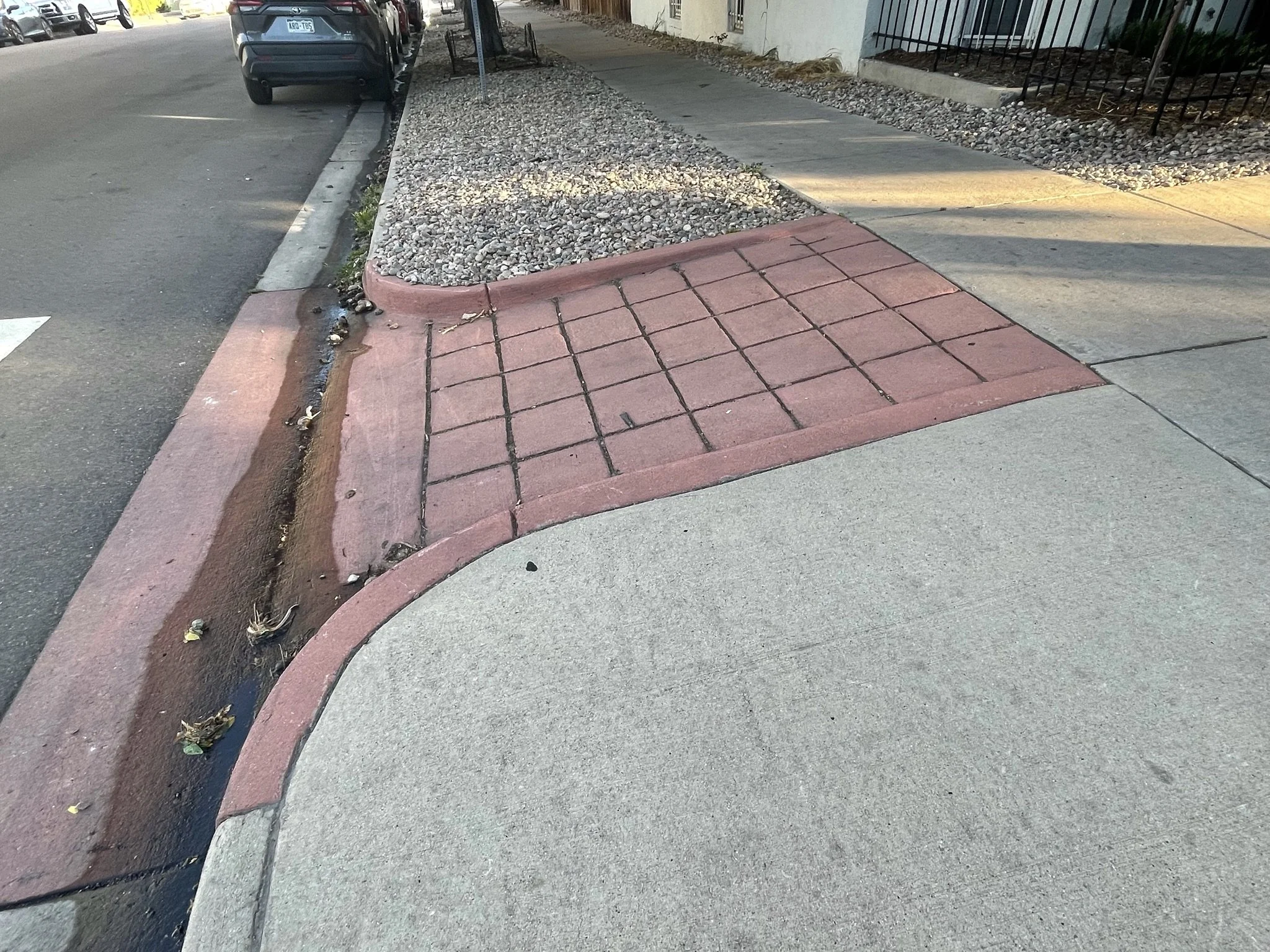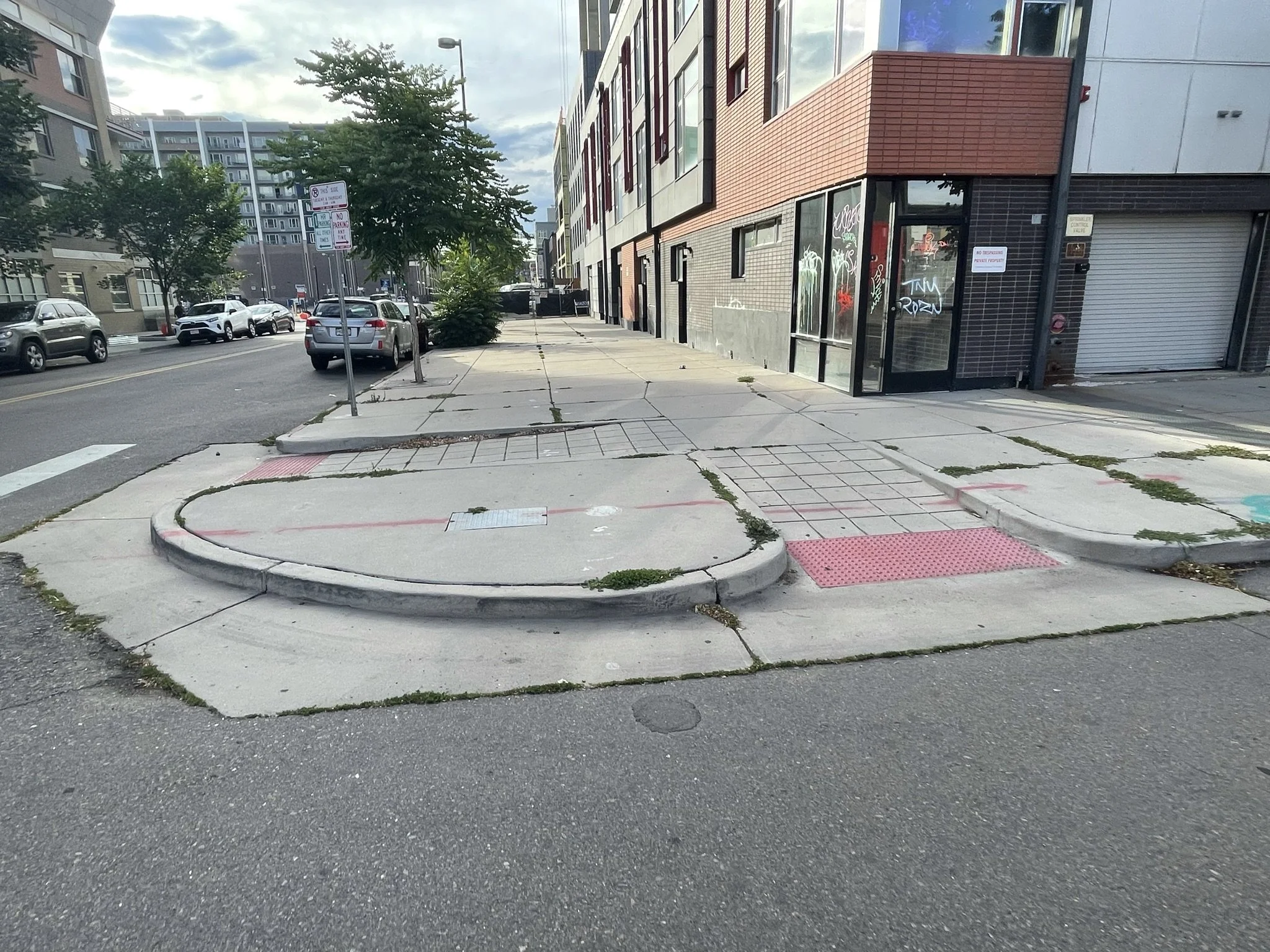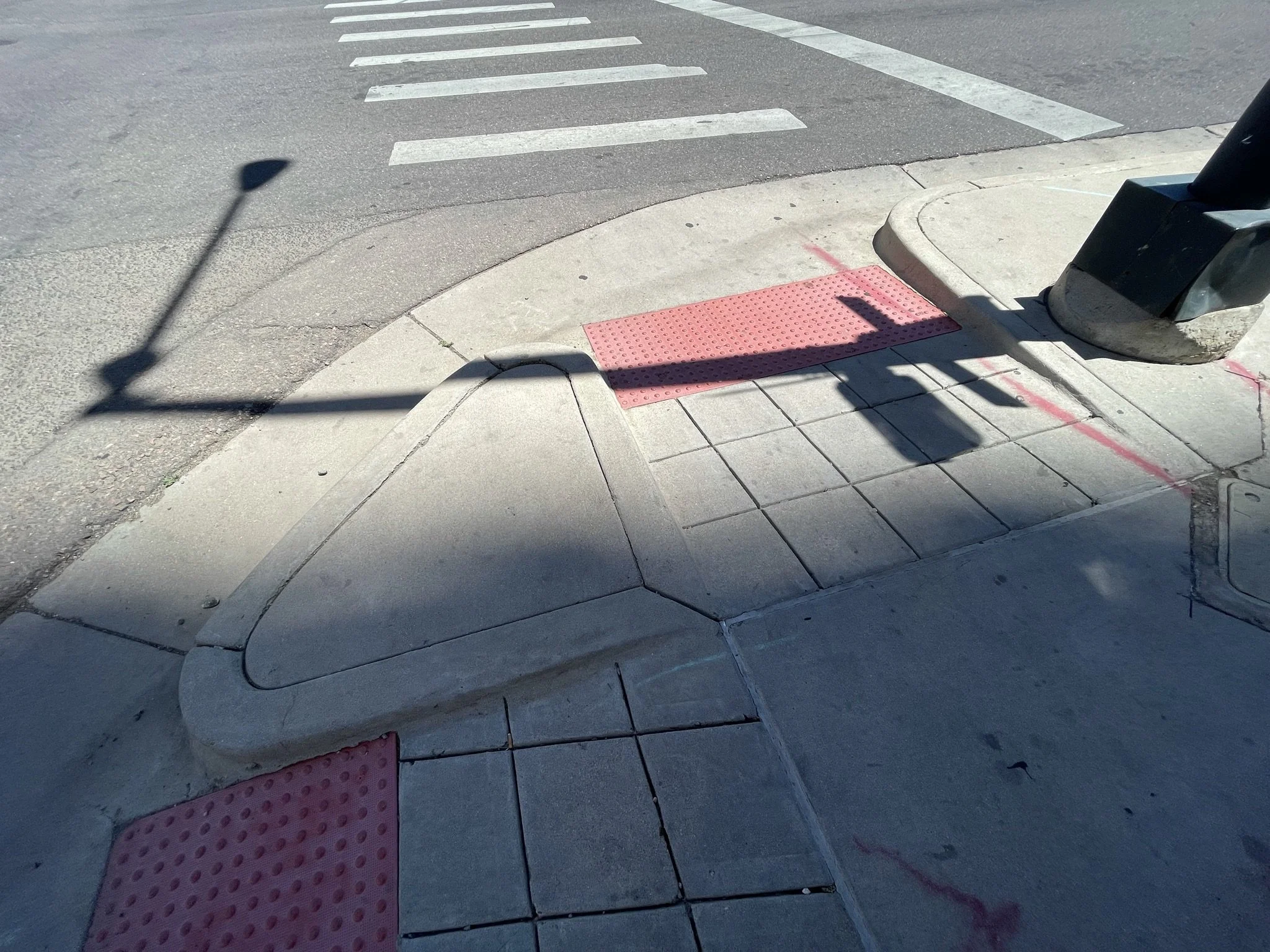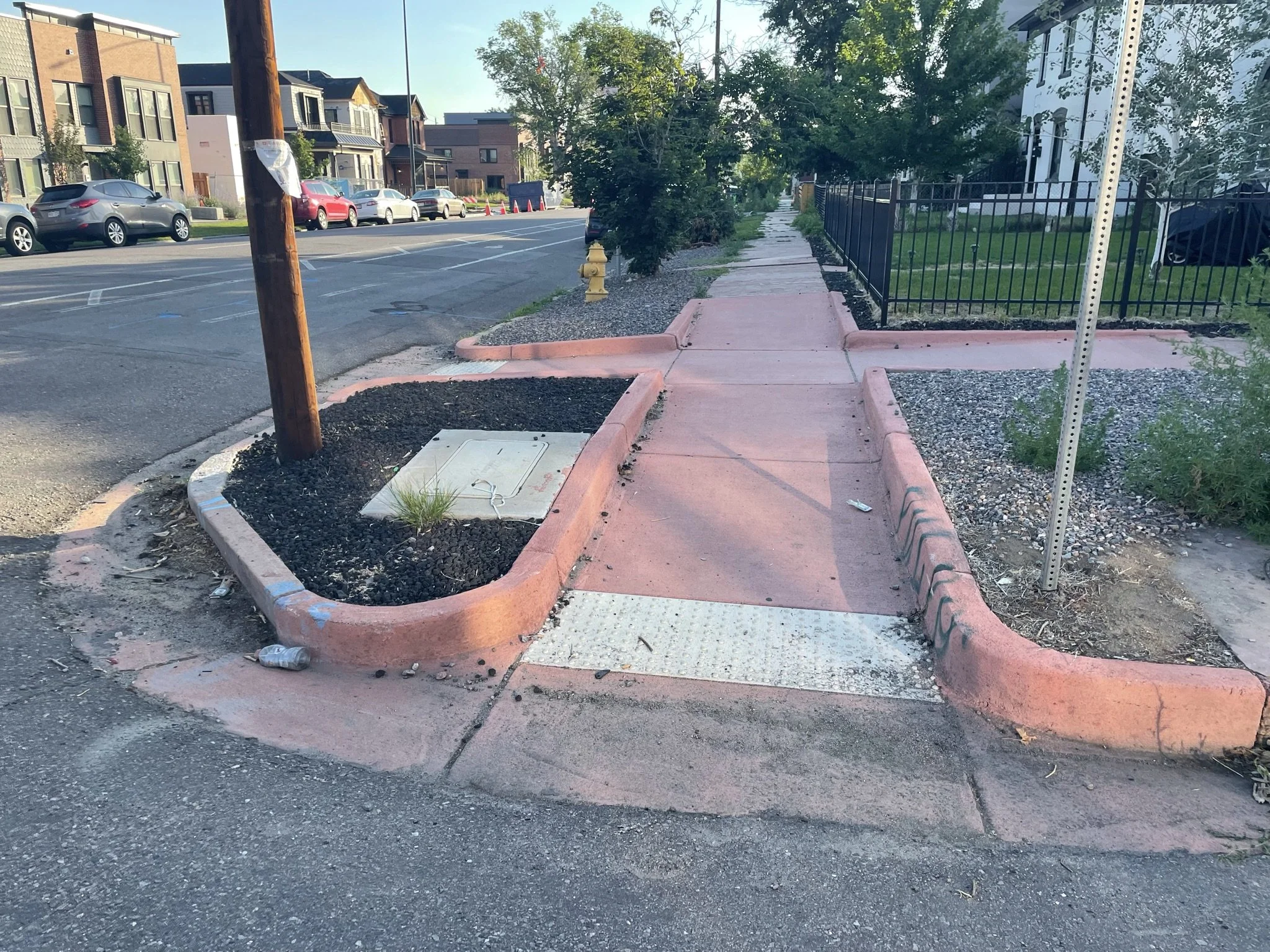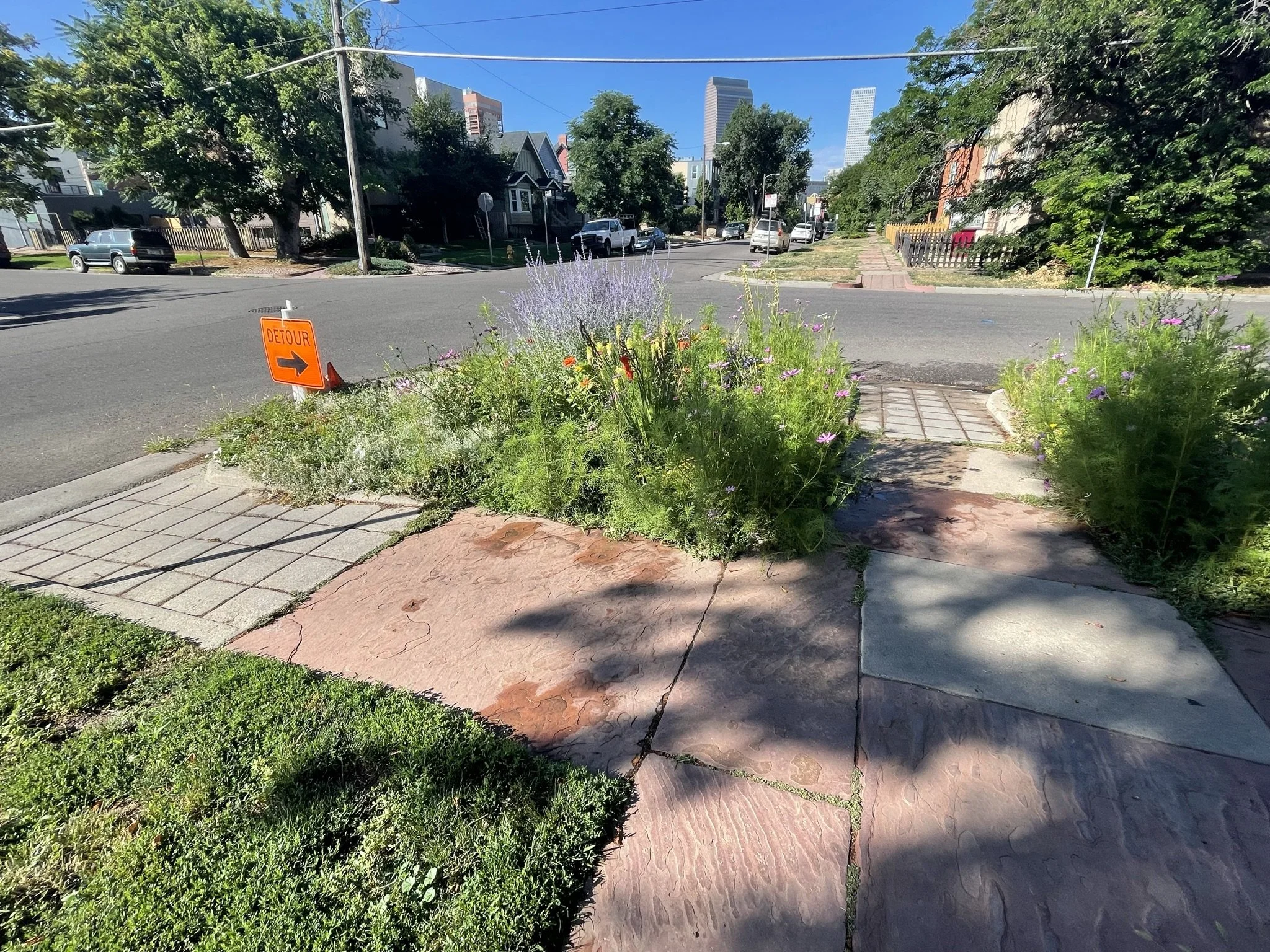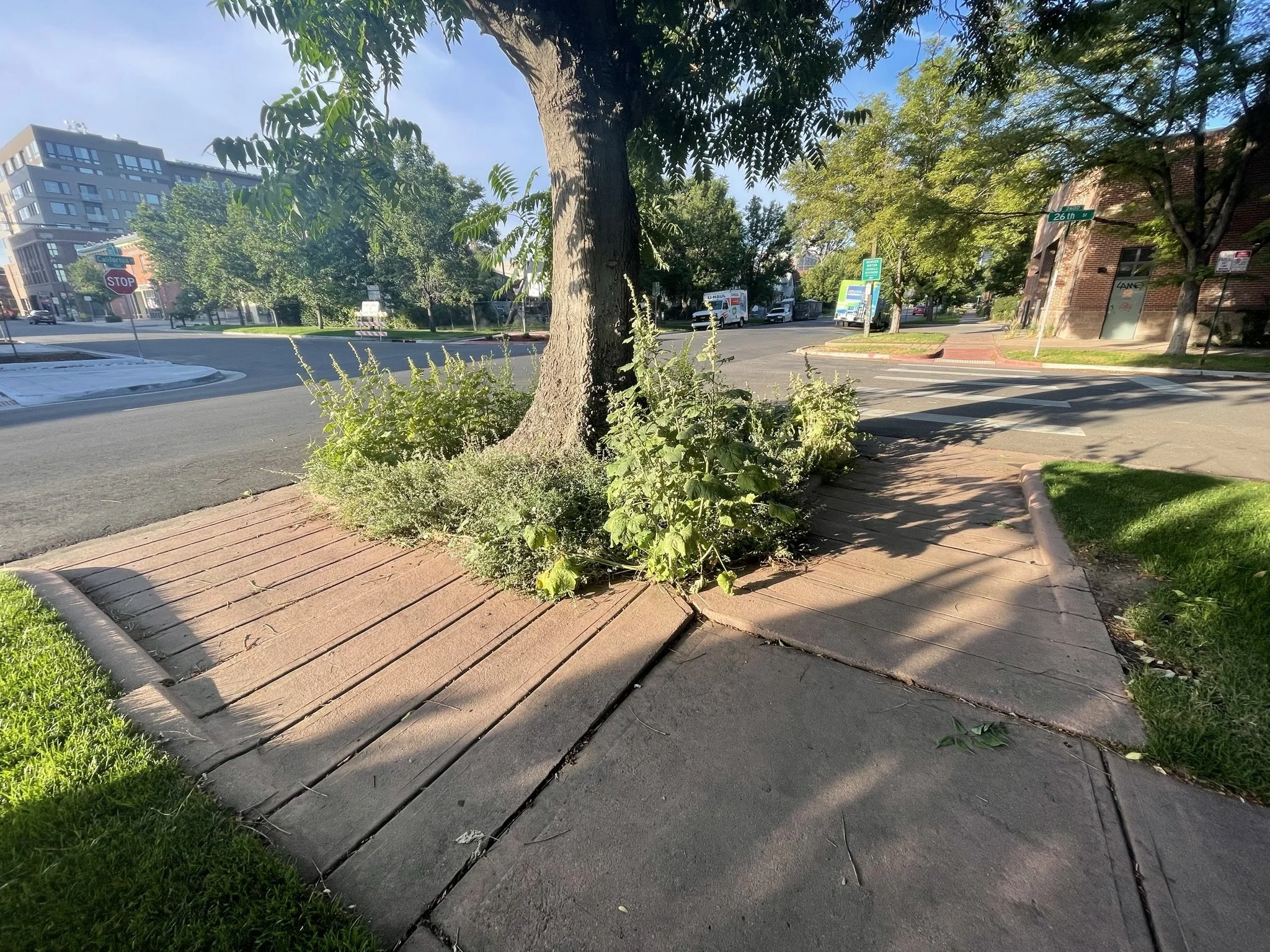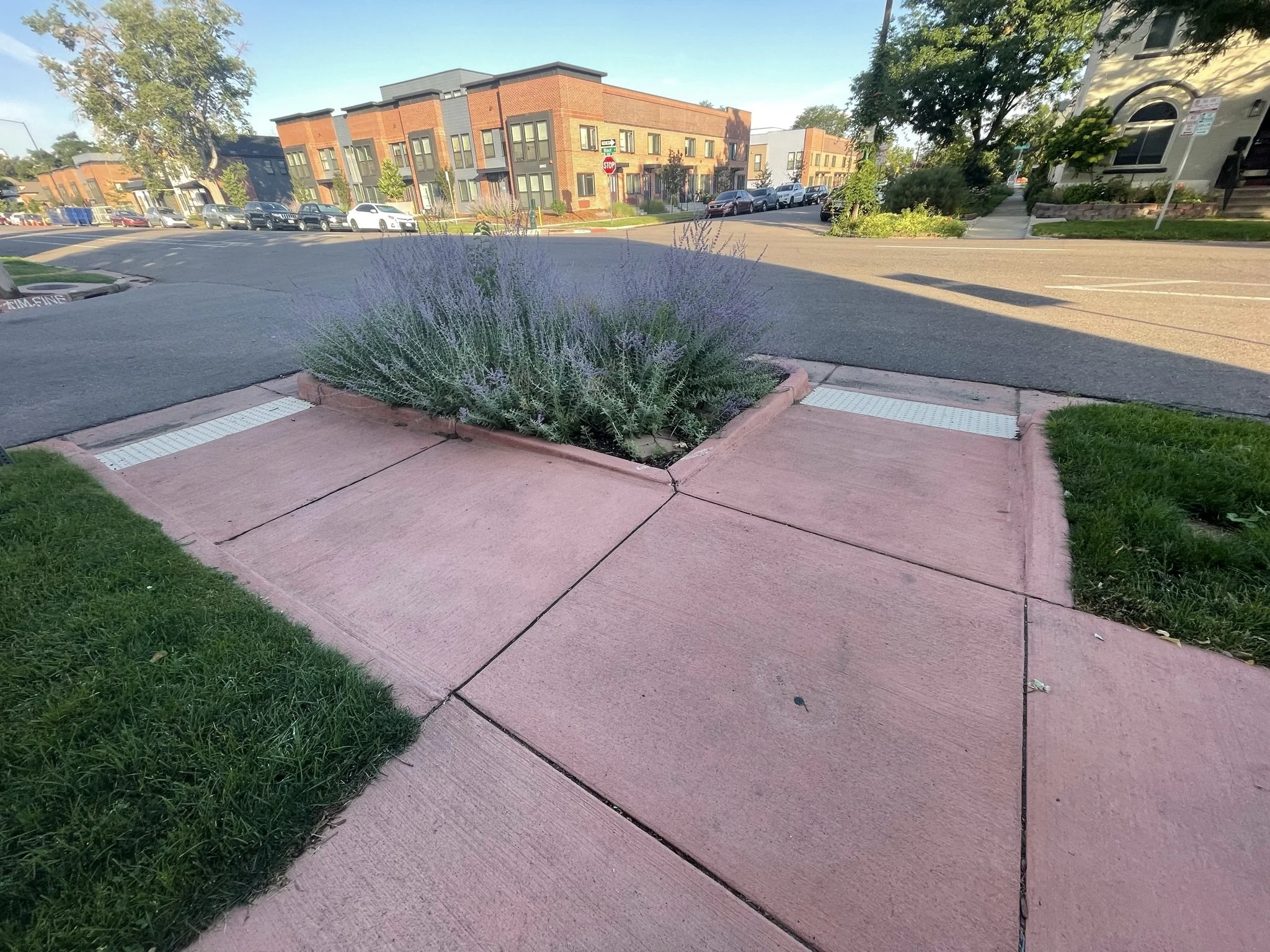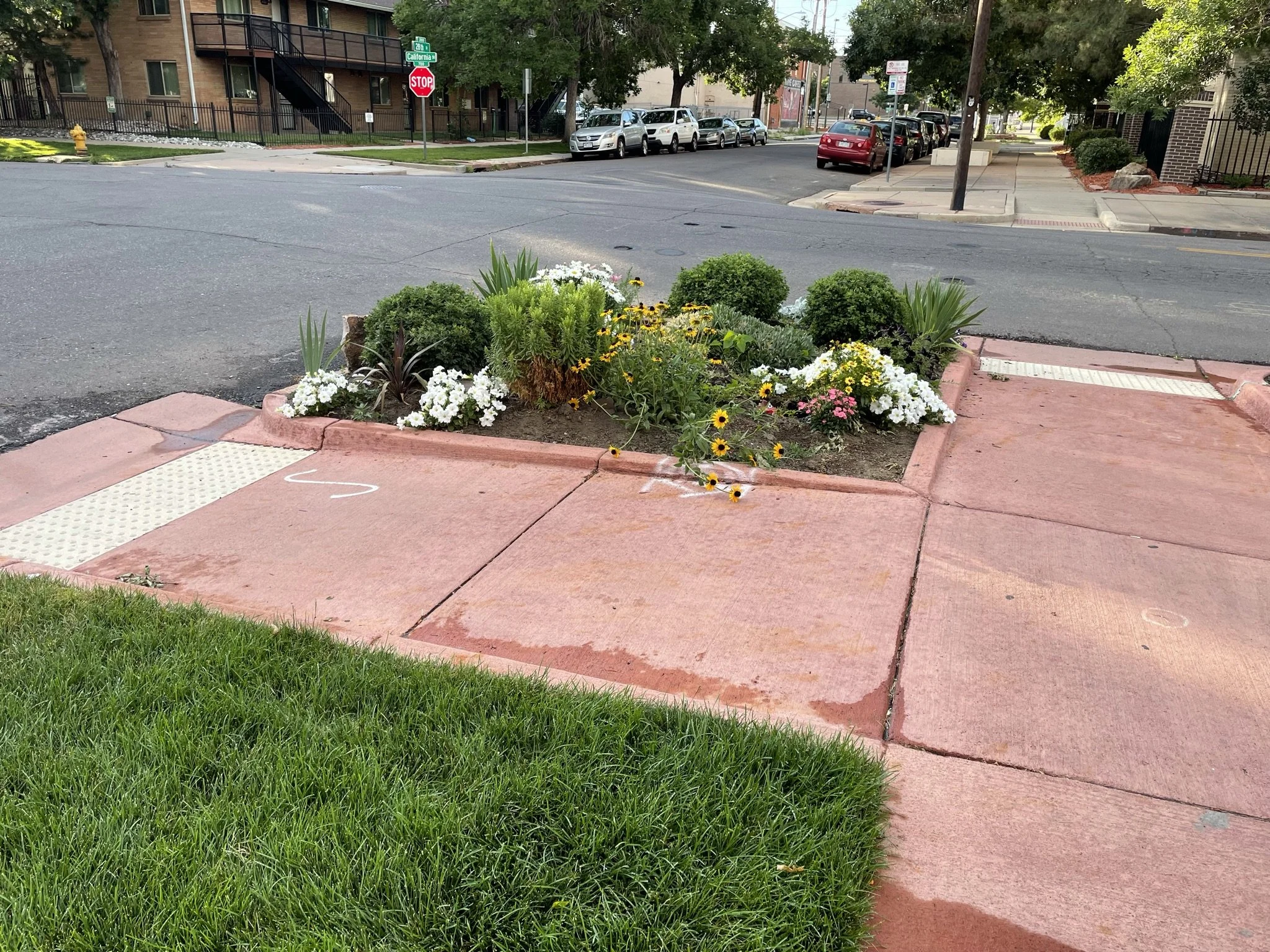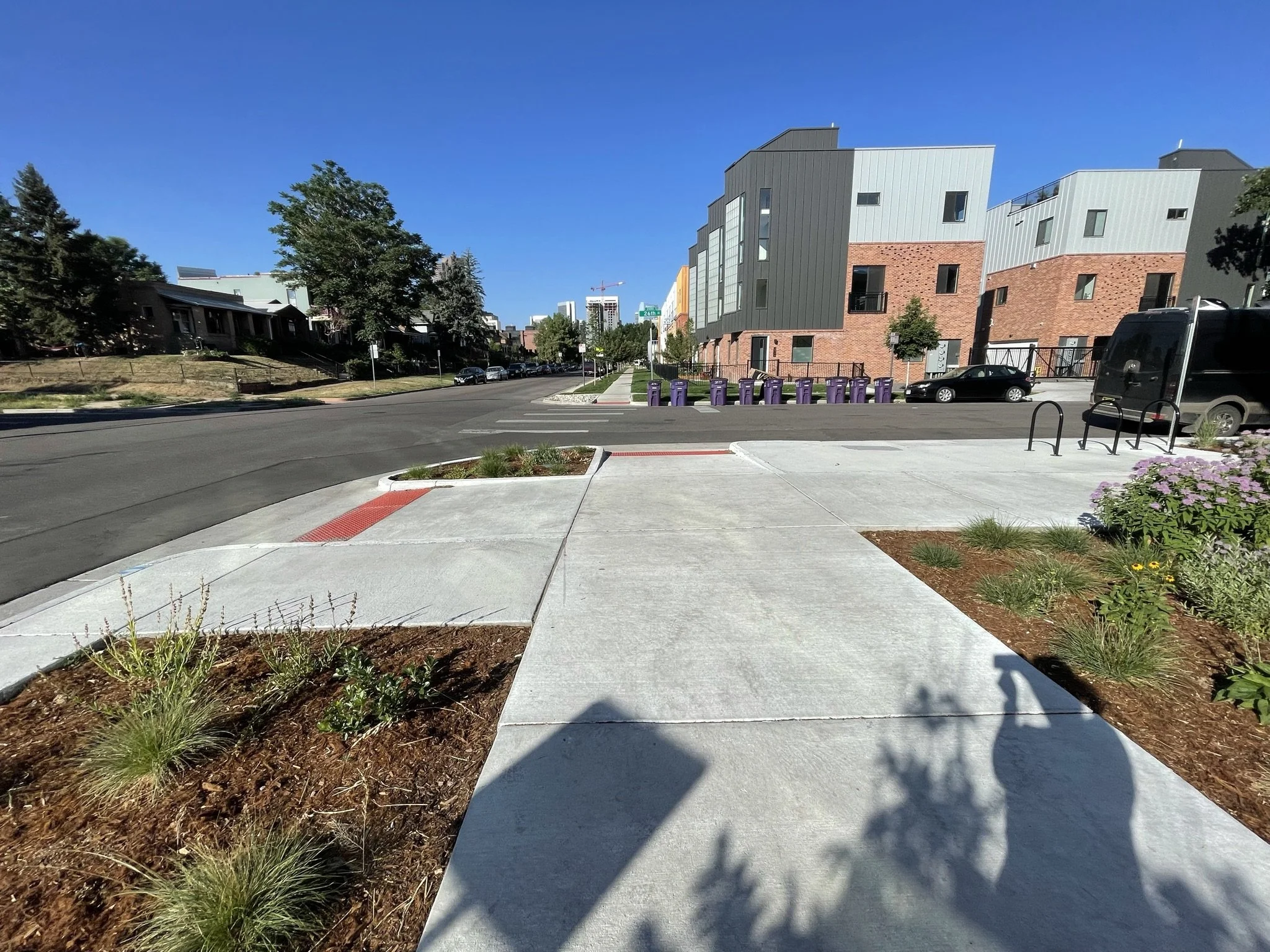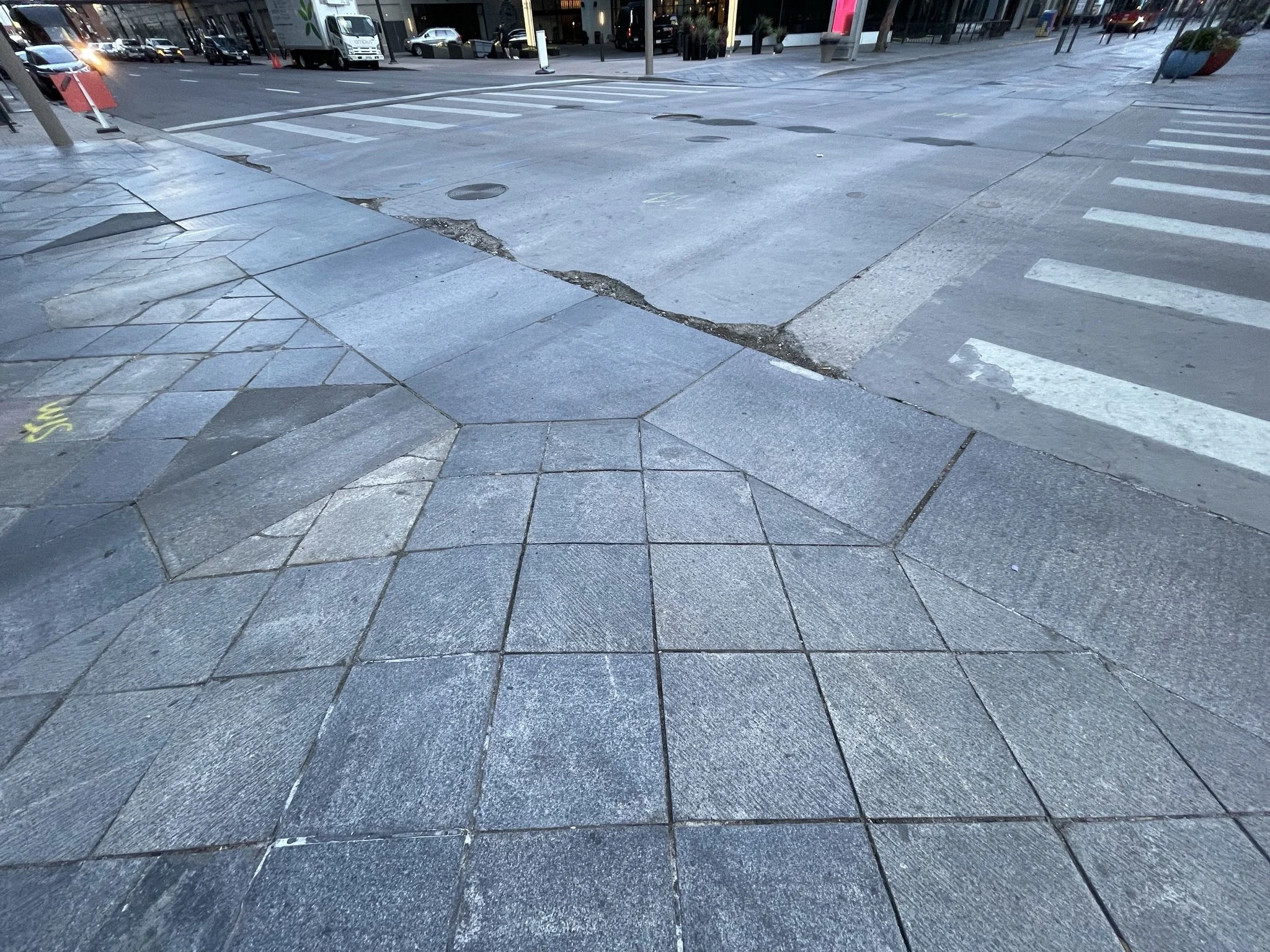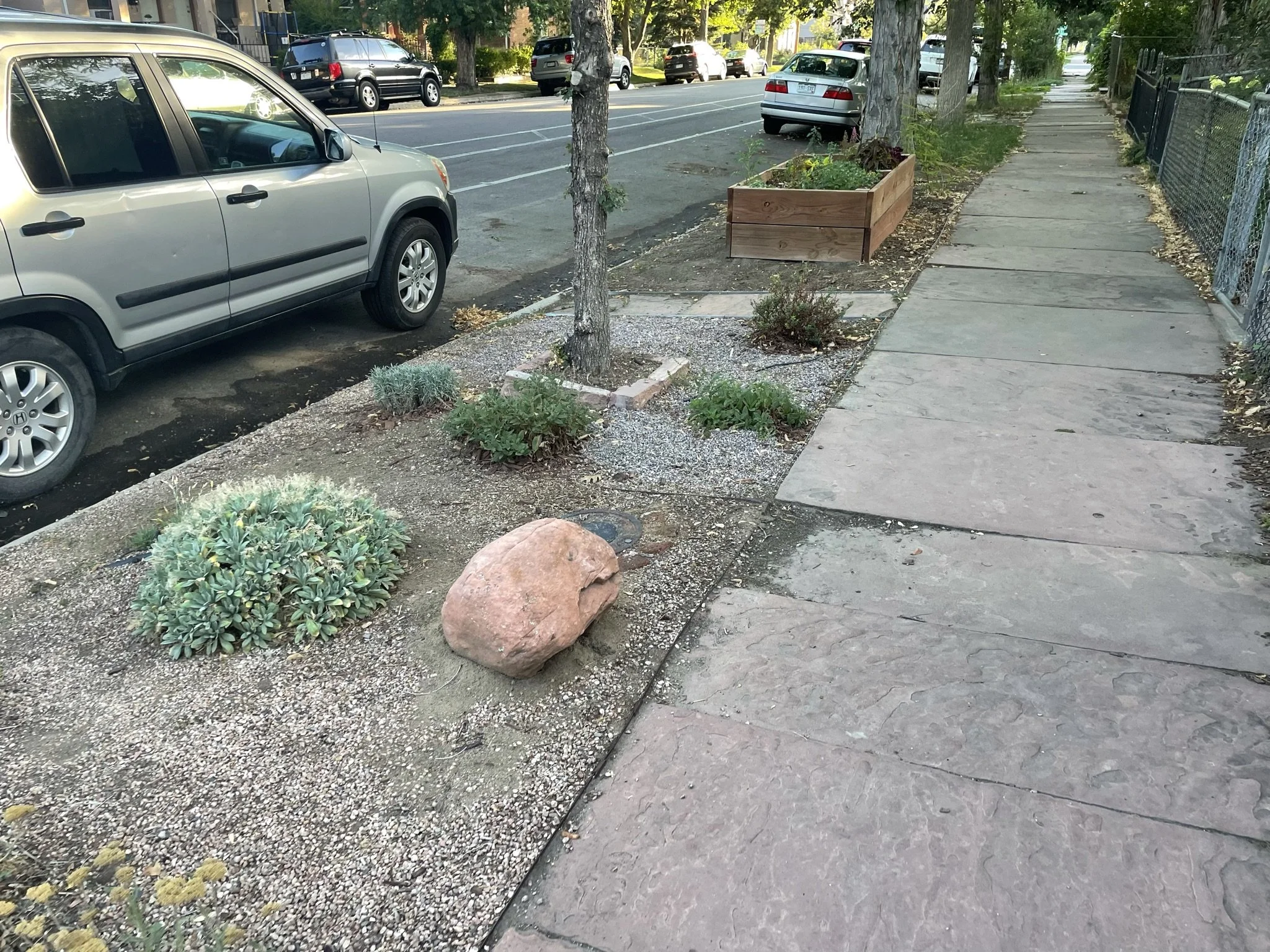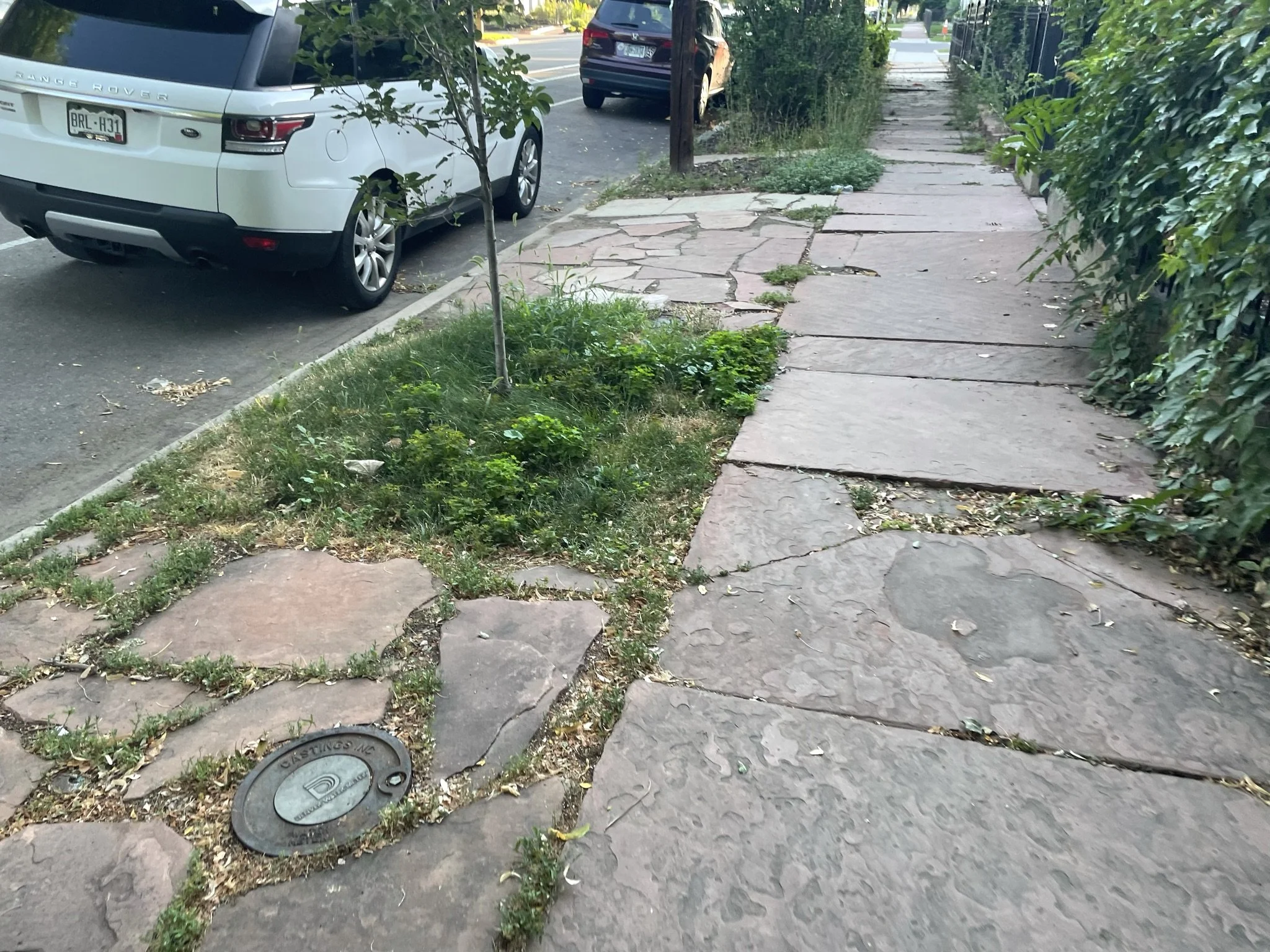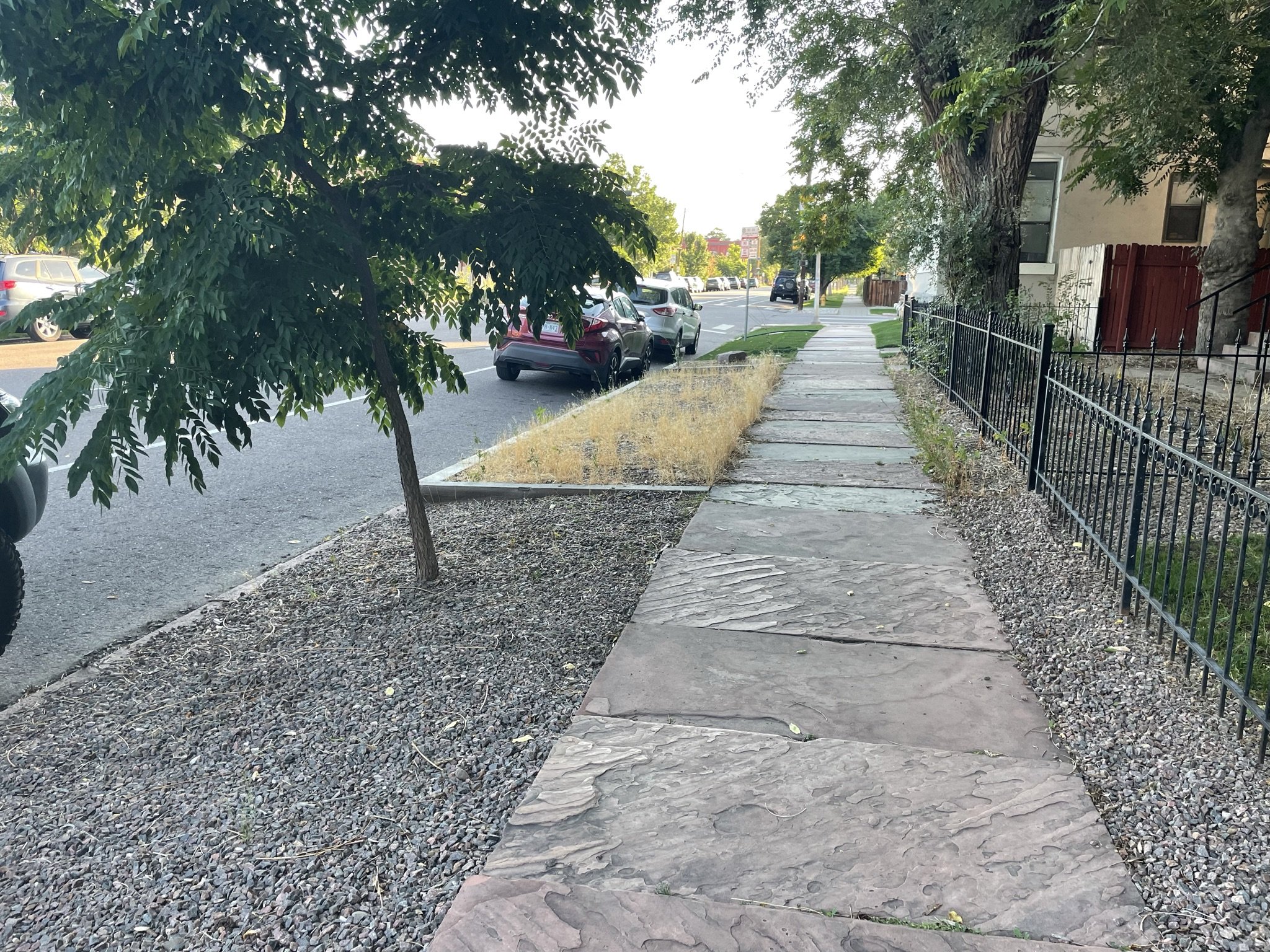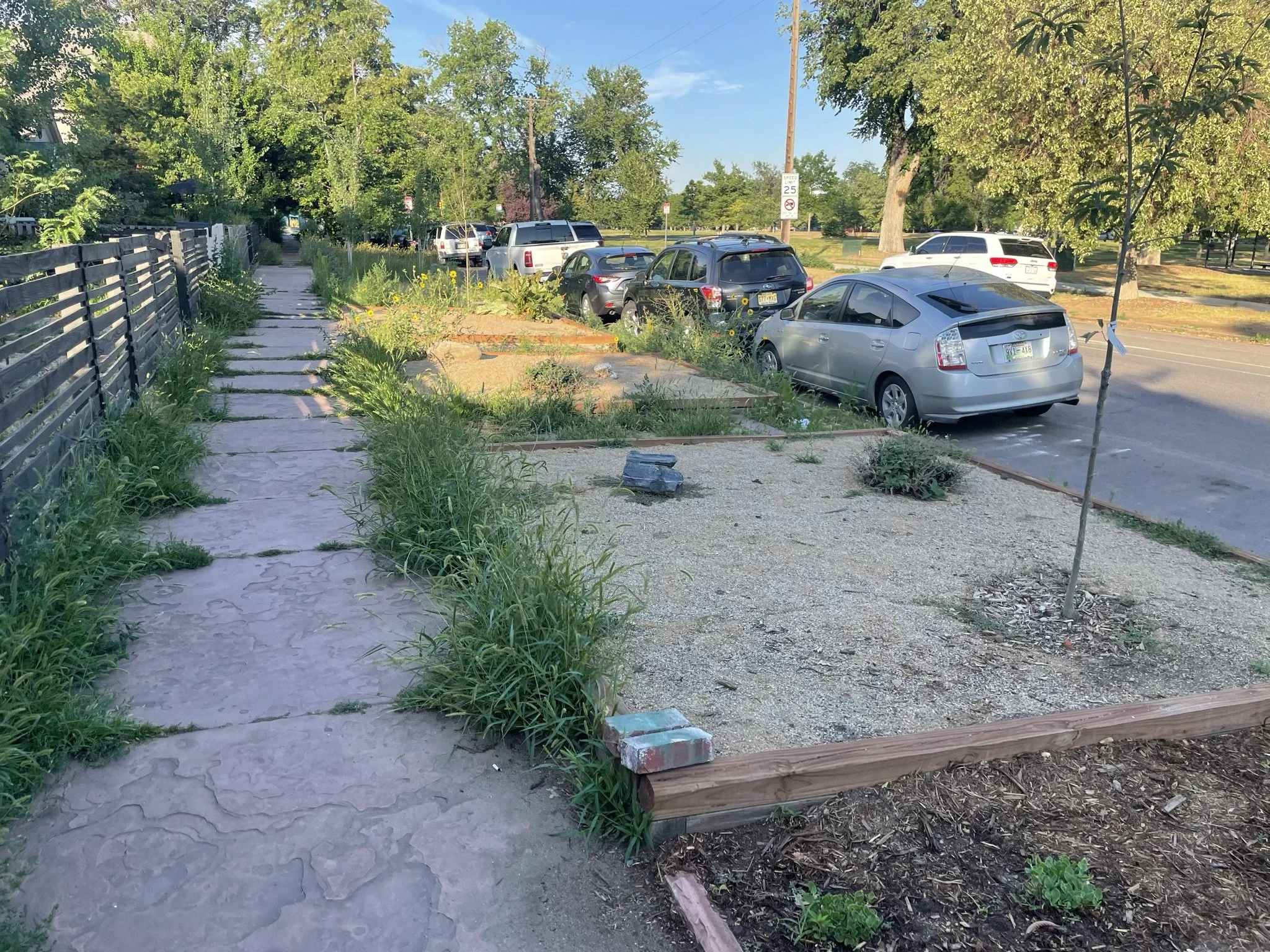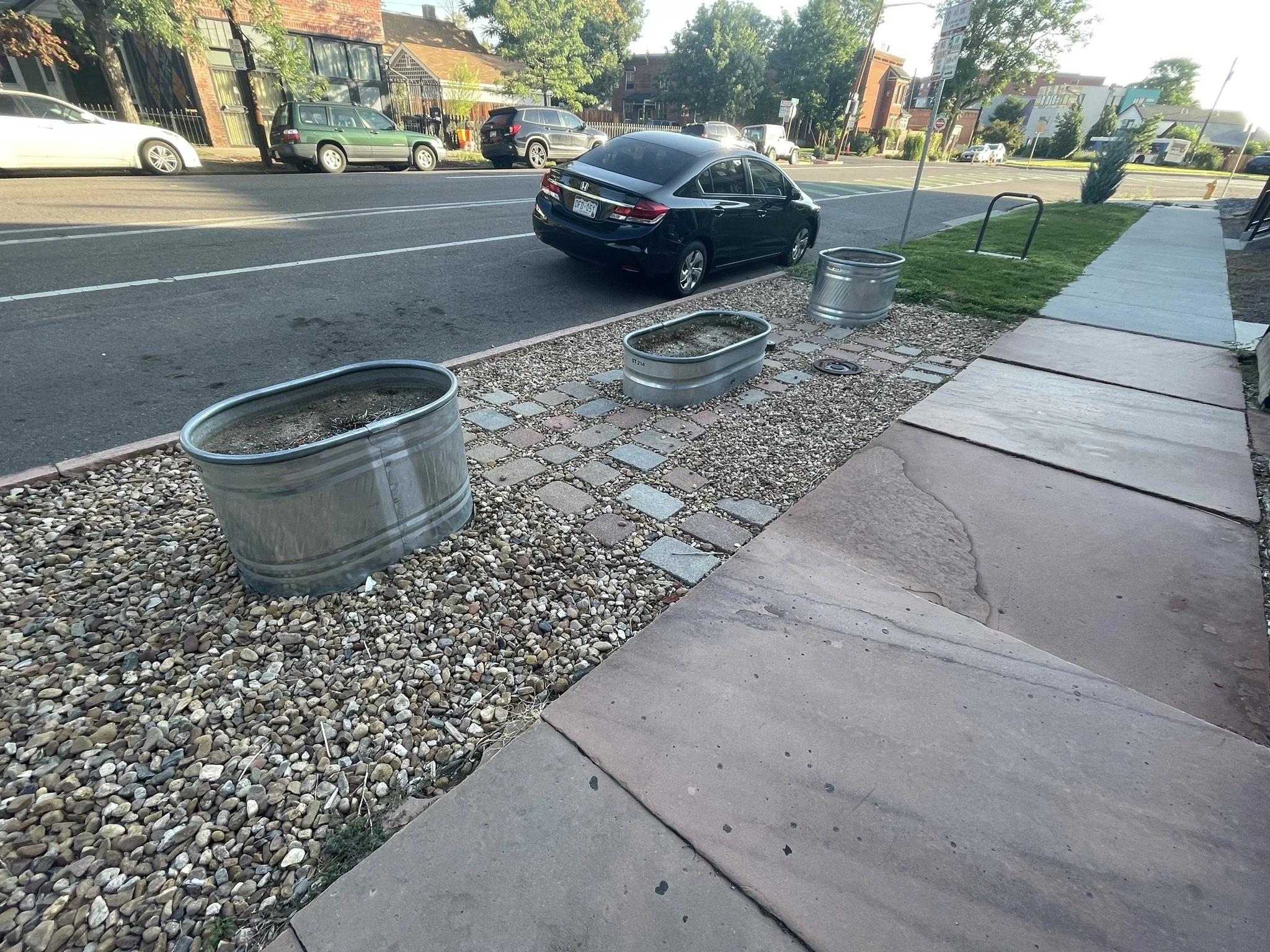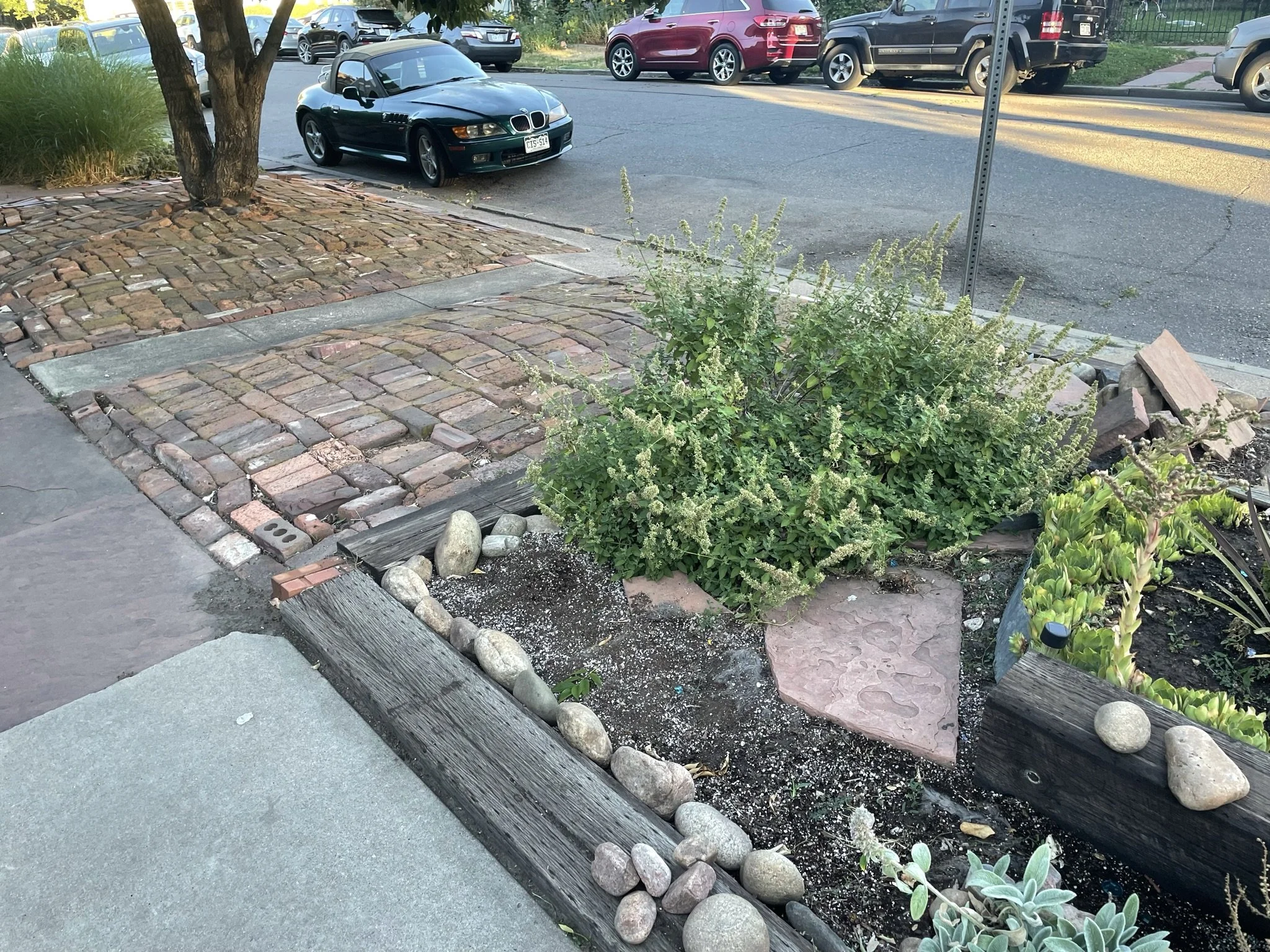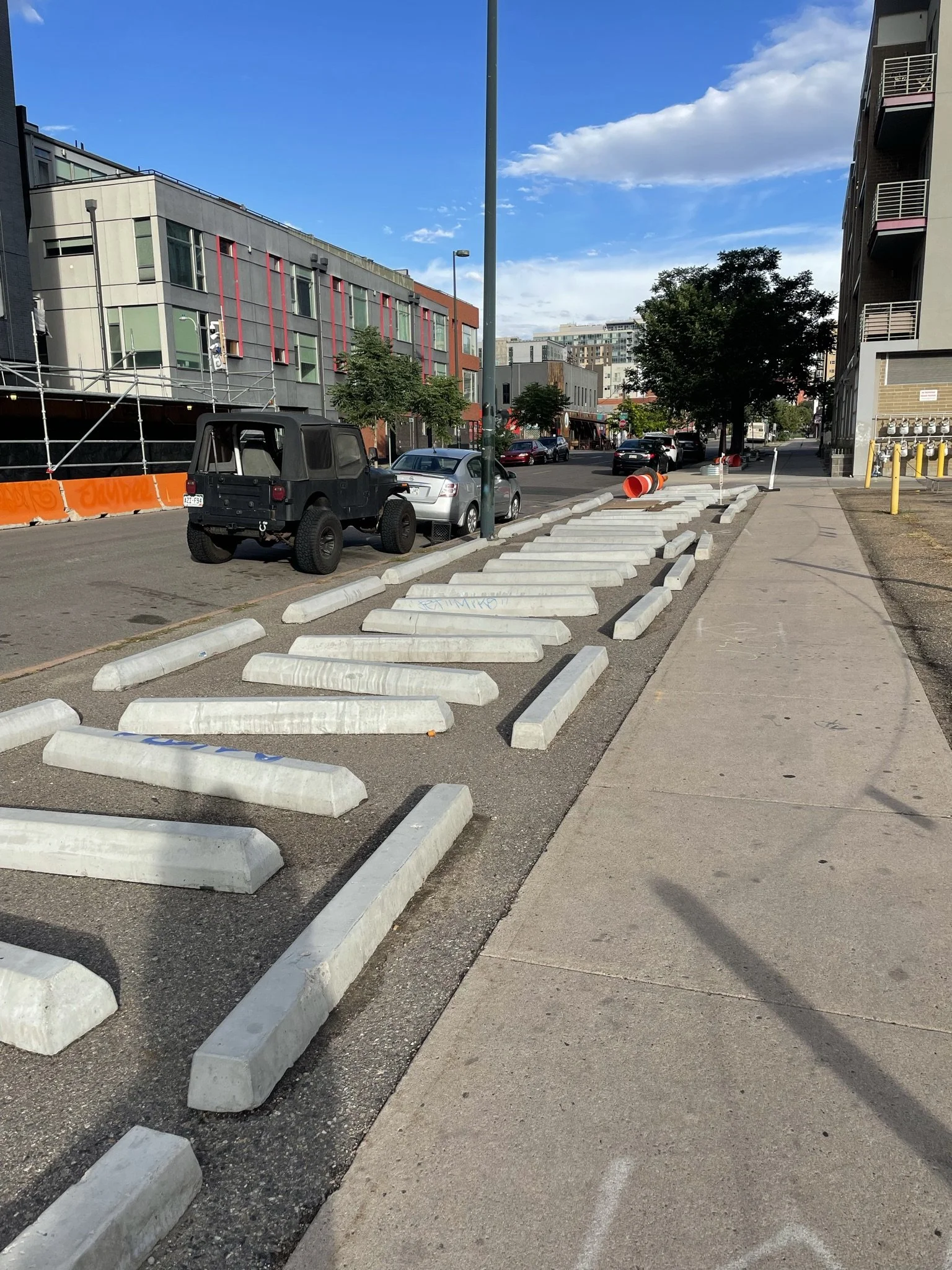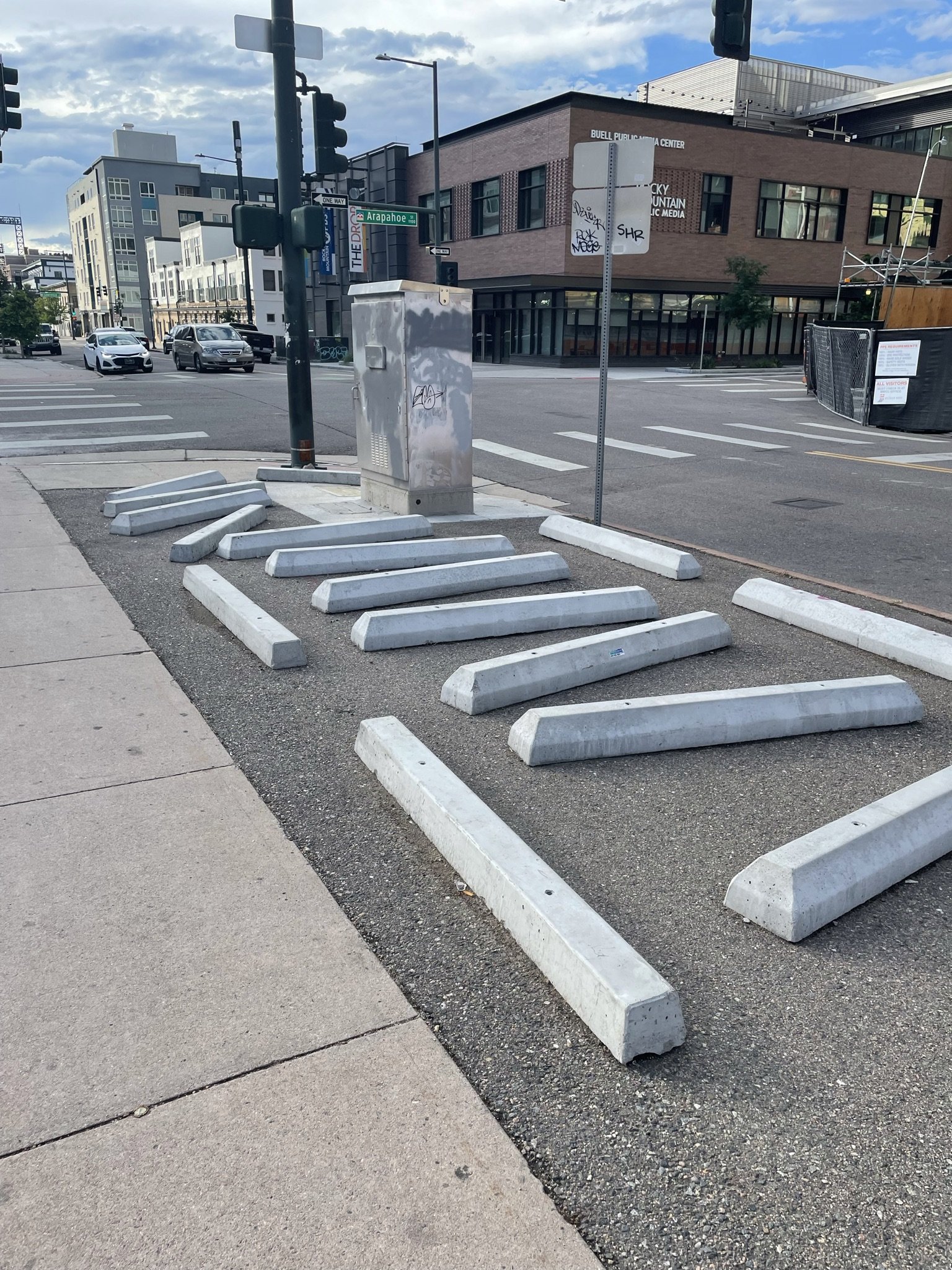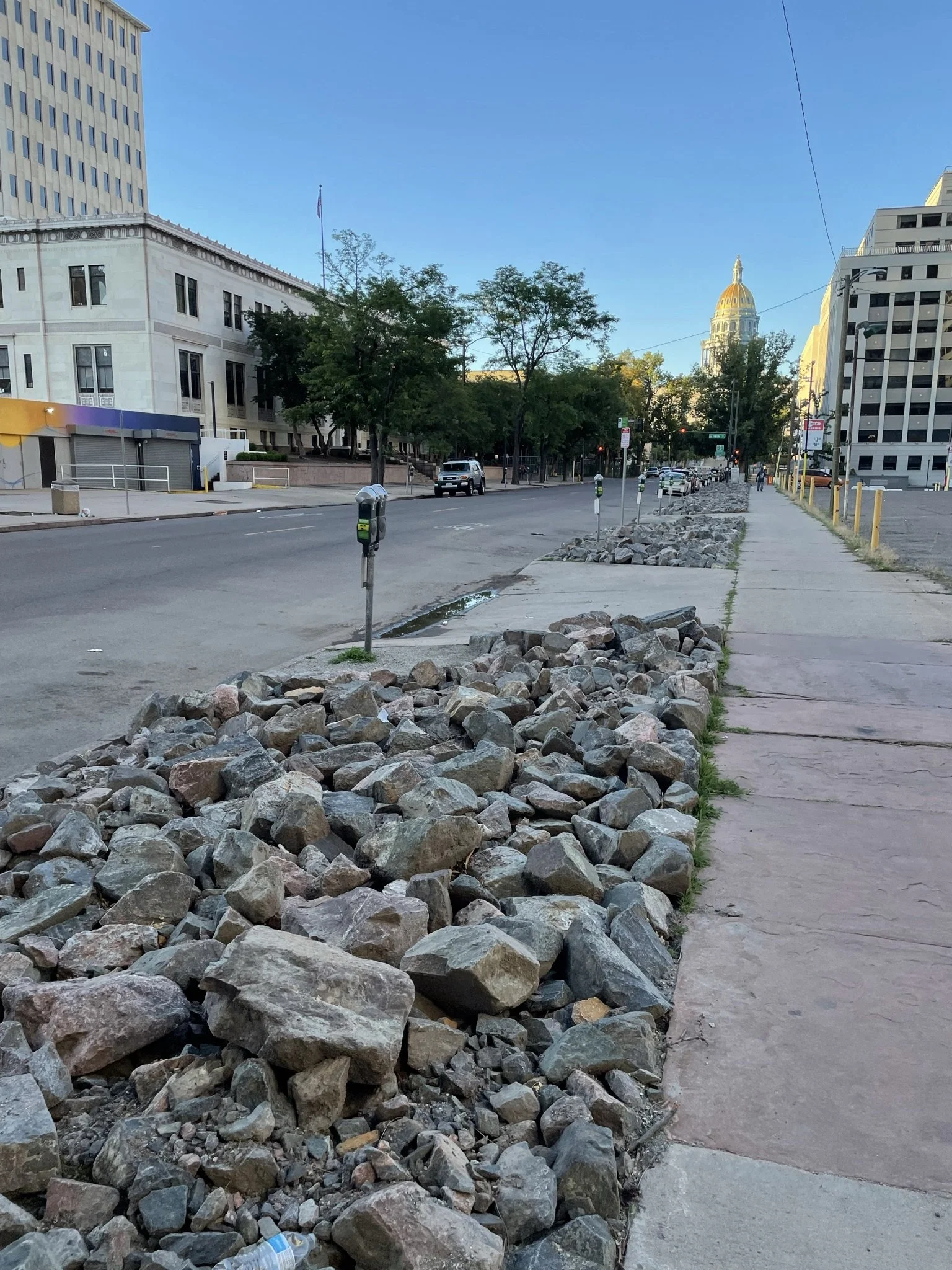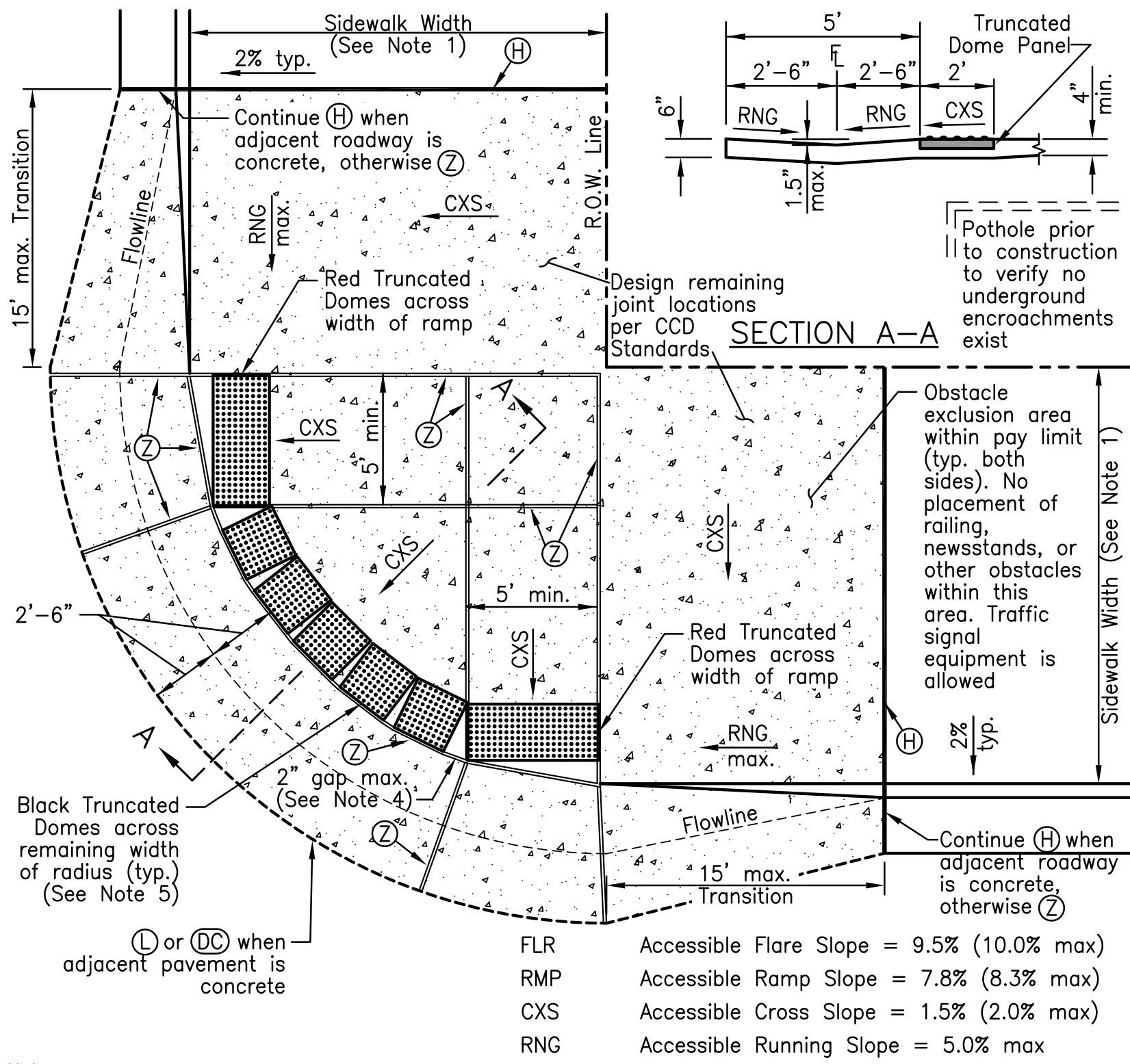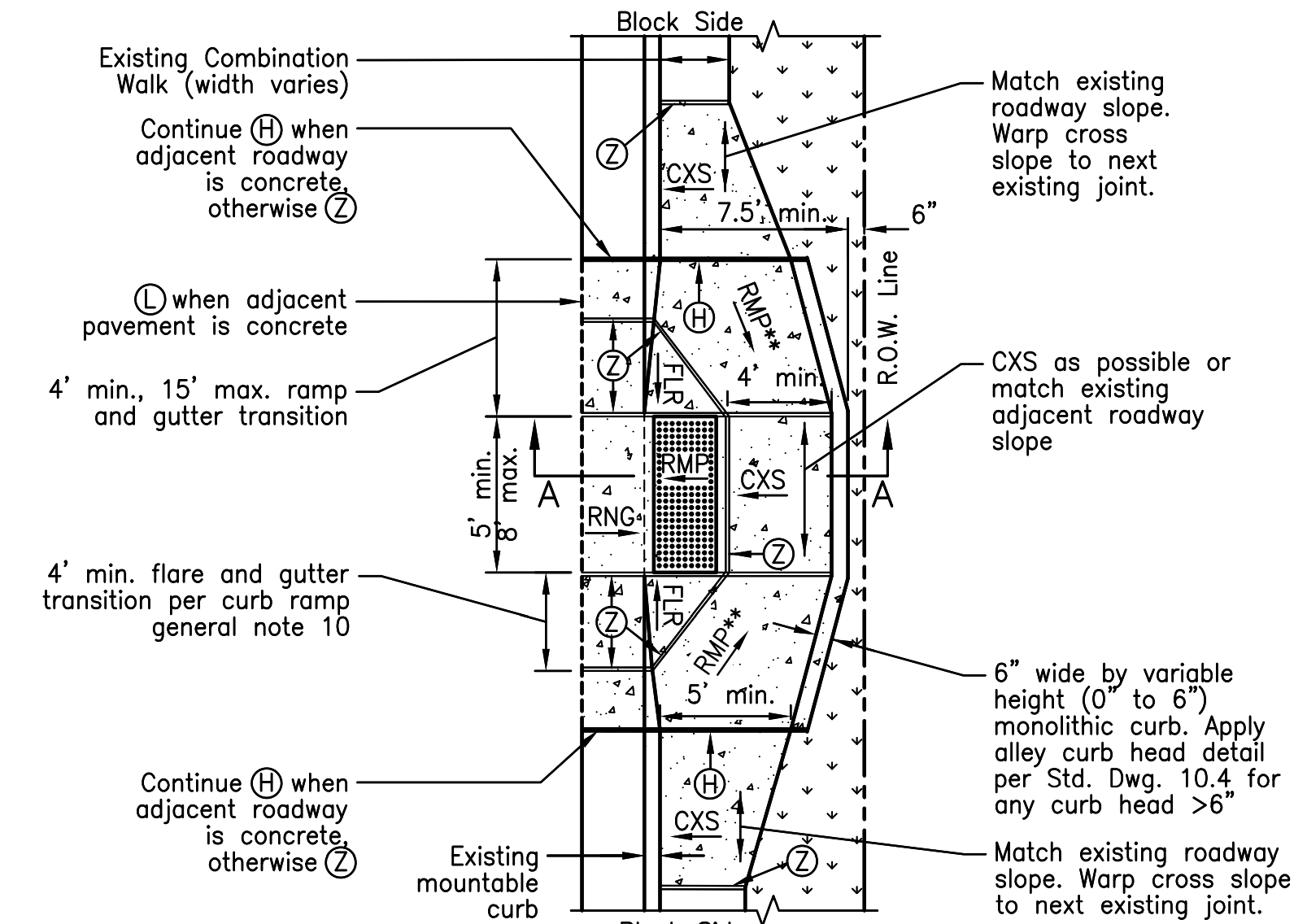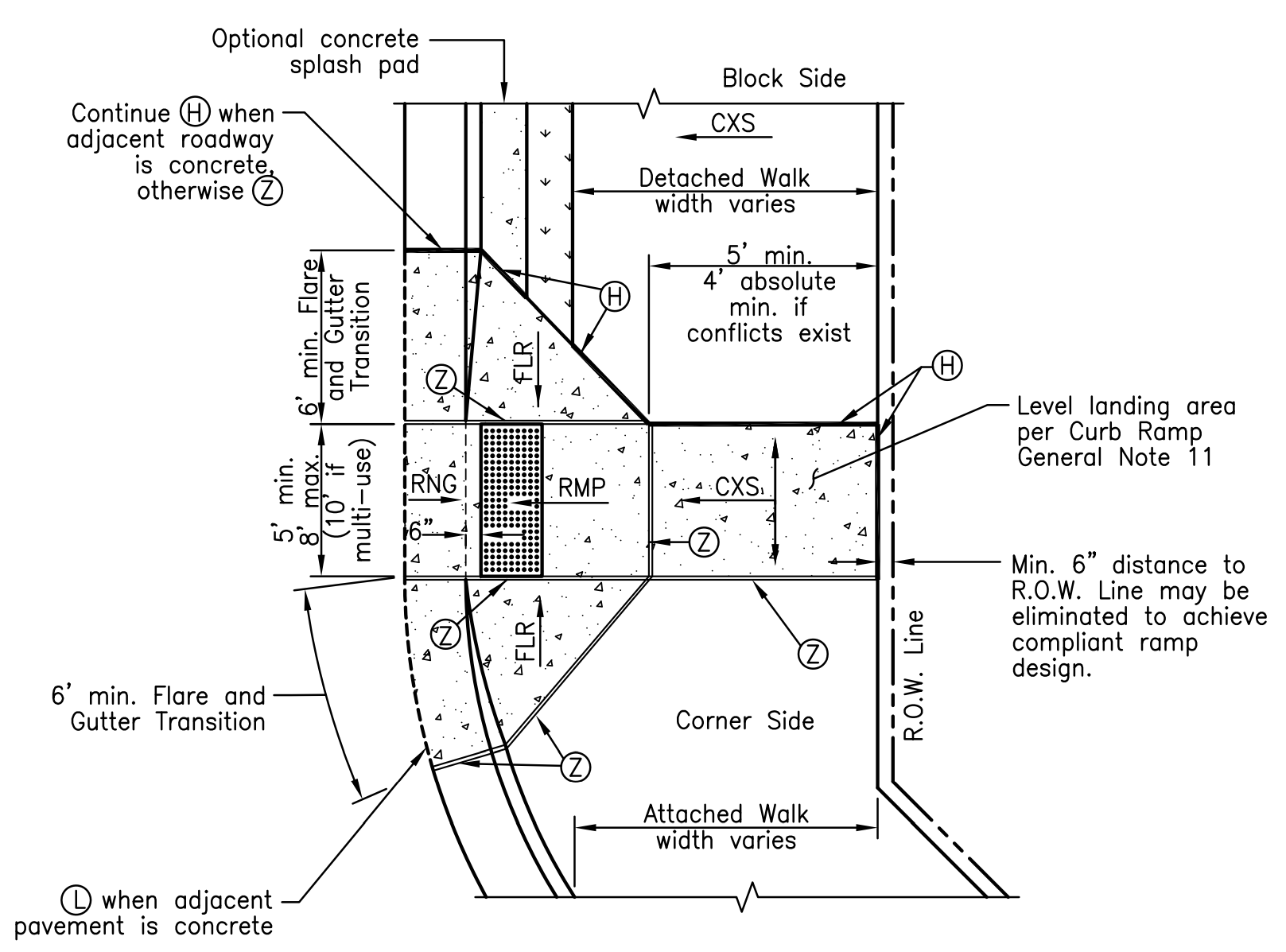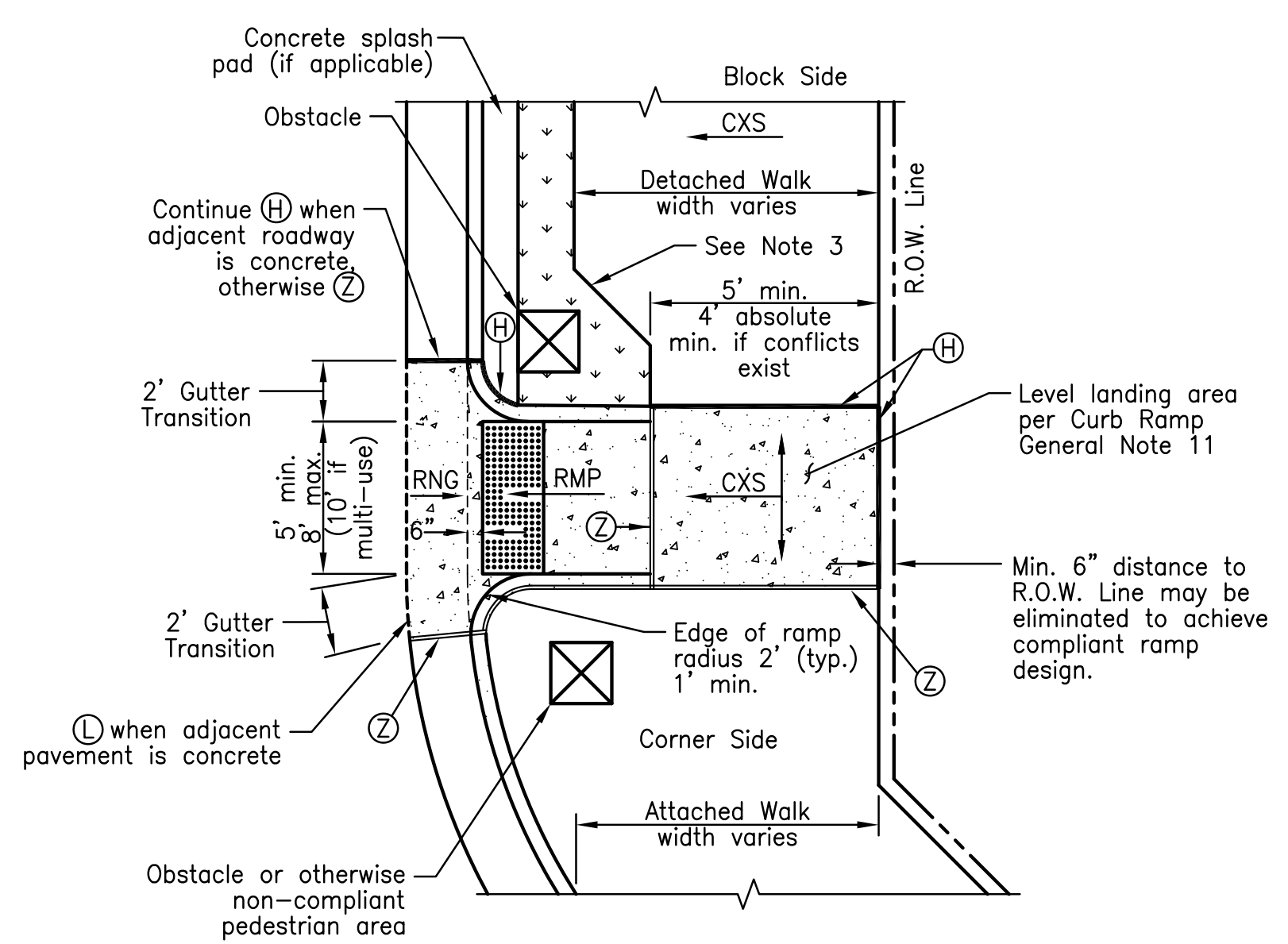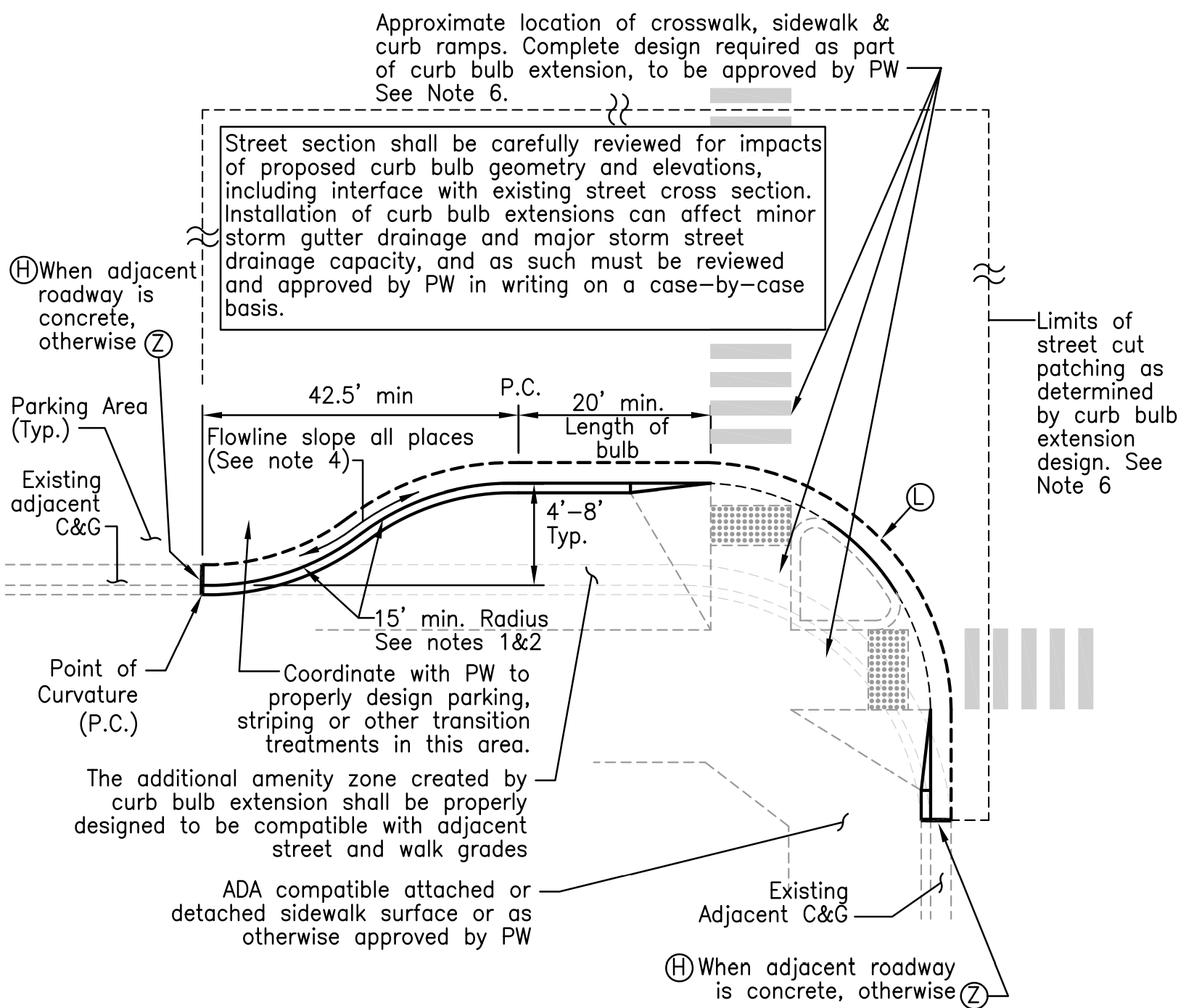Urban Design in Denver: Sidewalks and Curb Ramps
My favorite way to explore a new city as an architect? Go for walks!
While working remotely in Denver, Colorado; I lived in Five Points. It’s a mixed-use neighborhood with apartments, single family homes, commercial properties, vacant lots, churches, parks, and a lot more.
I explored Five Points along with a few other neighborhoods and discovered that Denver, out of all the cities I have visited before, has the most unique assortment of sidewalk and curb ramps. Below, are a few that I thought were worth sharing for those interested in learning more about it’s urban design!
Let’s start with Sidewalk 101. The ramp portion shown in the below photo, leading to the street, is called a curb ramp. It’s a cut in the sidewalk that allows a person to process into the street without stepping down or up. It’s a great amenity for folks with mobility issues, folks on wheels, and items on wheels.
In other American cities, you’d see an angled section leading down to the straight ramp, but Denver’s most popular curb types have a distinct curb at two sides of the ramp. How did I discover this? I tripped.
Now, welcome to Sidewalk 201. Here we have a multi-directional crossing at a corner. You see the two ramps, with a stamped concrete center ‘island’. Again, this layout is somewhat unique, but provides a great place to shovel snow or step out of a ramp puddle.
Denver celebrates this layout and had quite a few takes on the double ramp and ‘island’. I prefer the ones with permeable surfaces with lots of greenery!
Red sidewalks are also a thing. In more historic areas, I believe the stone used is Flagstone, but in other areas, it appeared that red concrete was the material of choice.
I loved this newer sidewalk corner (below) as it provides clear visuals for safe pedestrian crossing, bike racks, docking areas for scooters and bikes, and vegetation as well. A very compassionate urban condition!
In more urban settings, Denver says “screw the sidewalk!” and opts for edgeless curbs that ramp right into the street. I think that reducing barriers is a great idea, but when waiting for traffic, I definitely felt more exposed than I usually would. I think that the paving color is so similar to the street that it blends into one entity. A more successful installation would differentiate between the sidewalk and the street with color and material.
Denver also had typically very wide and very diverse sidewalk buffer zones. These zones had grass, weeds, trees, planter boxes, cisterns, and gravel which made for a very interesting walk as nearly every block had a totally different urban condition in this area.
I appreciated the little walkways that bridged the street and sidewalk. This is a nice feature for people crossing mid-block or parking their cars.
Denver also had some very unique (and questionable) solutions for homeless encampments.
In many paved sidewalk buffers, I noticed rocks, boulders, and even parking blocks that made the ground surface unwelcoming for tents and sleeping bags. In vegetated areas (not pictured) I saw a lot of fencing and signage discouraging long-term guests.
Here’s a compilation of the technical details for Denver’s typical curb ramp conditions, as discussed above. You can find more information, directly from Denver’s Public Works websites, at the links at the bottom of this post.
Ultimately, Denver had a lot of sidewalk and curb conditions I had not appreciated before in other cities.
I thought that their sidewalk boulders were a bit harsh, but I loved the corner conditions that celebrated accessibility, visibility, and public amenities such as gardens and bike racks. I also loved the diversity of planting that residents brought to their sidewalk buffer zones.
I hope next time that you take a walk, consider the sidewalks in your neighborhood. How do their layouts affect the look of these spaces? How could they be improved for more equitable access?
Further Reading:
Denver Streetscape Design Manual (see page 35)
